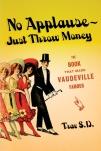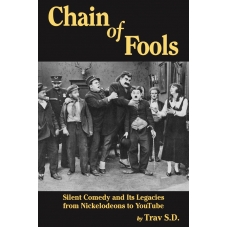Today is the birthday of Elsie Ames (1902-1983).
Comedy is a matter of taste, of course. I’ve never encountered any comedian (no matter how popular or great) that I didn’t know someone who didn’t like them. By contrast, I’ve never met anyone who liked Elsie Ames or didn’t think she was terrible. People throw that word around “bad” so often and it’s often unjust. But, no, onscreen at least Elsie Ames was at a Cherry Sisters level of bad.
She began in a vaudeville act with her husband Nicholas “Arno” Casa called Ames and Arno. The act’s first appearance on film was a dance specialty in the 1937 Paramount short Double or Nothing.
In 1940 Jules White began casting her in comedy shorts at Columbia, appearing opposite Buster Keaton, Harry Langdon and El Brendel. And this is what she is known for. She had an unfortunate habit of upstaging whatever comedian she appeared with, which might be forgivable if she brought anything to the table. If she had actually been funny and talented, we might not have minded, for Keaton and Langdon in particular are in steep decline in these years, not just off their game but painful, and El Brendel himself was bad, so we would go so far as to say that we would have been grateful for a funny scene stolen by Ames. (Think of Virginia O’Brien, whom I think is the best thing about the Marx Brothers’ The Big Store). But, no, although she’s trying mighty hard. She’s loud, screechy, unpleasant, clumsy, ungraceful, and she can’t act. Did I leave anything out? Yet for some reason for a brief moment Jules White seemed to be nourishing her at the expense of comedians we have some investment in and actually care about. In What Makes Lizzy Dizzy? she’s actually the star.
Audiences of the time must have agreed with me. By 1942, just two years into the experiment, White had dropped her. She went back to live appearances with Arno, and the two did their dance specialty in two more films, Fun Time (1944), and Rhythm Inn (1951), and they also appeared in Houdini (1953). 20 years later, John Cassavetes gave her the best screen roles of her career in Minnie and Moskowitz (1971) and A Woman Under the Influence (1974).
For more on silent and slapstick comedy please check out my new book: Chain of Fools: Silent Comedy and Its Legacies from Nickelodeons to Youtube, just released by Bear Manor Media, also available from amazon.com etc etc etc
To find out about the history of vaudeville, consult No Applause, Just Throw Money: The Book That Made Vaudeville Famous, available at Amazon, Barnes and Noble, and wherever nutty books are sold.



